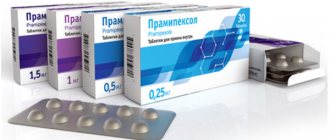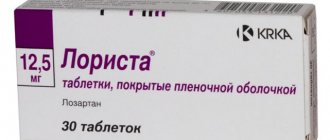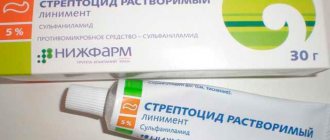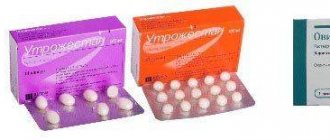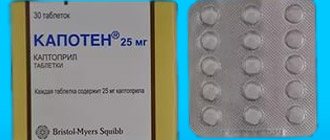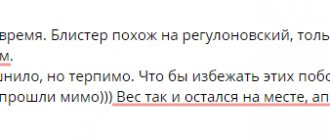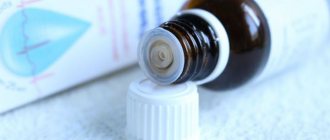Pharmacodynamics of korglykon
Korglycone is a cardiac glycoside
that inhibits the sodium-potassium transport enzyme ATPase. Due to this, the concentration of sodium ions in cardiomyocytes increases, which causes the opening of calcium channels and an increase in the concentration of Ca++ ions in cardiomyocytes. An excess of sodium ions causes an acceleration of the release of calcium ions from the sarcoplasmic reticulum, due to which the Ca++ content in the heart cells increases. Excess calcium ions leads to inhibition of the troponin complex, which leads to inhibition of the interaction between myosin and actin.
Korglycon increases the speed and force of contraction of the heart muscle (positive inotropic effect). The mechanism for increasing myocardial systolic function differs from the Frank-Starling mechanism; the increase in contractility is independent of the degree of preliminary stretching of the myocardial fibers. The systole of the ventricles of the heart becomes more energy efficient and shorter. Due to an increase in the systolic function of the left ventricular myocardium, the minute and stroke volumes of blood (MBV and SV) increase. The end-diastolic and end-systolic volumes of the heart (EDV and ESV) are significantly reduced, which leads to a reduction in heart size, a decrease in the oxygen demand of cardiomyocytes, and an increase in myocardial tone. The negative dromotropic effect is manifested in potentiation of refractoriness of the atrioventricular (atrioventricular) node. In case of atrial fibrillation (atrial fibrillation), cardiac glycosides, in particular corglycone, slow down the heart rate, lengthen the periods of diastolic relaxation and filling, thereby improving systemic and intracardiac hemodynamics.
The negative chronotropic effect manifests itself in the form of a decrease in heart rate. This pharmacological effect is formed as a result of the indirect and direct influence of corglycone on the physiological regulation of heart rhythm. If a positive inotropic effect is not realized when using the drug (for example, in humans, dogs and other animal species with a normal level of left ventricular myocardial contractility), corglycon has a direct vasoconstrictor effect. On the contrary, in patients with chronic (congestive) cardiovascular failure, the drug causes an indirect vasodilatory effect, increases diuresis, reduces venous blood pressure, reduces edema syndrome, and dyspnea.
The positive bathmotropic effect is manifested in toxic and similar doses. When administered intravenously, corglycon begins to act after 10 minutes and the maximum effect develops after 120 minutes.
Indications for use of the drug "Korglikon"
According to the instructions for use in humans and pets for corglycon
The following indications have been established:
- chronic cor pulmonale
- atrial flutter (with the aim of transforming flutter into atrial fibrillation with a controlled frequency of impulses through the atrioventricular node or reducing the heart rate)
- atrial fibrillation tachistole form
- paroxysms of supraventricular tachycardia
- acute left ventricular heart failure
- chronic (congestive) heart failure or its exacerbation
Contraindications to the use of corglycone
According to the instructions for use, korglicon has a number of contraindications:
- glycoside intoxication
- allergic reactions and hypersensitivity
The drug is prescribed with caution when:
- atrioventricular block
- bradycardia
- paroxysm of ventricular tachycardia
- sick sinus syndrome (without installation of an artificial pacemaker)
- isolated mitral valve stenosis
- obstructive form of hypertrophic cardiomyopathy (HCM)
- unstable angina
- acute myocardial infarction
- hypoxia
- Wolff-Parkinson-White syndrome
- chronic diastolic heart failure (restrictive cardiomyopathy, fibroelastosis, cardiac amyloidosis, cardiac tamponade, constrictive pericarditis)
- myocarditis
- obesity
- extrasystoles
- pronounced tonogenic dilatation of the heart cavities
- hypothyroidism electrolyte disturbances
- conditions causing electrolyte disturbances
- old age
- alkalosis
Korglikon: analogues
When Korglikon is not suitable for patients for some reason, they begin to think about whether there are worthy substitutes for this drug. Finding analogues of Korglykon is an incredibly difficult task, since so far scientists have not been able to develop a medicine that would contain similar active components as the original drug. But still, if necessary, you can select a drug with a different composition that has a similar therapeutic effect as a replacement.
One of them can be called Digoxin. The doctor may also prescribe the drug Strophanthin instead of Korglykon, among the features of which it is worth noting its speed. A good analogue is Digitoxin. Let us remind you that all of the above drugs are glycosides and consist only of plant materials.
Reviews of Korglikon
It should be noted that discussions of the effectiveness of this drug are quite rare. Users are usually interested in how to properly administer the solution and in what dose, since the doctor writes a prescription for Korglykon in Latin, so much remains unclear to them.
In cases where the doctor’s prescription turns out to be unclear or questionable, you need to clarify everything again or consult with another specialist. Independent selection of drugs of this effect is unacceptable, since the dosage and use of the solution has specific features.
Pharmadynamics
Cardiac glycoside blocks the transport Na+/K+-ATPase, as a result the Na+ content in the cardiomyocyte increases, which leads to the opening of Ca2+ channels and the entry of Ca2+ into the cardiomyocytes. Excess Na+ leads to an acceleration of the release of Ca2+ from the sarcoplasmic reticulum, i.e. the Ca2+ concentration increases, which leads to inhibition of the troponin complex, which has an inhibitory effect on the interaction between actin and myosin.
Increases the force and speed of myocardial contraction (positive inotropic effect), by a mechanism different from the Frank-Starling mechanism, regardless of the degree of preliminary stretching of the myocardium; systole becomes shorter and energy-efficient. As a result of increased myocardial contractility, stroke and minute blood volume (SV and MCV) increases. The final systolic and diastolic volume of the heart (ESV and EDV) decreases, which, along with an increase in myocardial tone, leads to a reduction in its size, etc. to reduce myocardial oxygen demand. The negative dromotropic effect manifests itself in increased refractoriness of the AV node. With atrial fibrillation, cardiac glycosides slow heart rate, lengthen diastole, improving intracardiac and systemic hemodynamics.
The negative chronotropic effect (decrease in heart rate) develops as a result of direct and indirect effects on the regulation of heart rate. Has a direct vasoconstrictor effect (in the event that the positive inotropic effect of cardiac glycosides is not realized - in patients with normal contractility or with excessive stretching of the heart); in patients with chronic heart failure, it causes an indirect vasodilating effect, reduces venous pressure, increases diuresis: reduces swelling, shortness of breath.
Positive bathmotropic effect is manifested in subtoxic and toxic doses. When administered intravenously, the effect begins within 10 minutes and reaches a maximum after 2 hours.
Special instructions for the use of the drug Korglikon
With rapid intravenous administration, bradyarrhythmia, ventricular tachycardia, atrioventricular block and cardiac arrest may develop. To avoid these effects, the dose can be divided into 2-3 injections. Treatment is carried out under constant ECG monitoring. Use with caution in patients with thyrotoxicosis and with atrial extrasystole due to the possibility of its transition to atrial fibrillation. During pregnancy and lactation, the drug is used for health reasons.
Description of the drug
Corglycon is a cardiac glycoside with cardiotonic action. It is used for cardiac arrhythmias, supraventricular tachycardia, and various forms of pulmonary heart failure.
Forms and prices
The drug is available in tablet form and in solution for intravenous administration. You can purchase it at the prices presented in the table (Table 1).
Table 1 – Cost of Korglykon
| Release form | price, rub. |
| Ampoules 1 ml No. 10 solution d/i 0.06% | From 80 to 96 |
| Tablets, po 0.0006 g No. 30 | From 50 |
Compound
Tablets, white, film-coated, consist of:
- korglykon 0.0006 mg;
- lactose;
- refined sugar;
- magnesium stearate;
- povidone;
- magnesium carbonate;
- titanium dioxide;
- Aerosila;
- Vaseline oil;
- talc;
- beeswax.
The solution is presented in the form of a clear liquid with a bitter taste and the smell of the preservative chlorobutanol hydrate. 1 ml of Korglicon contains 0.6 mg of the active component, as well as a number of excipients - chlorobutanol hydrate and water for injection.
Pharmacodynamics and pharmacokinetics
This SG is obtained from the extract of lily of the valley. Its medicinal effect is similar to strophanthin, but has a longer lasting effect. Korglycon inhibits Na+/K+-ATPases of cardiomyocyte membranes, increasing the intracellular concentration of sodium ions and reducing the content of calcium ions.
Pharmacological action of the drug
An increased amount of sodium ions activates Na+/Ca2 exchange, increases the concentration of calcium ions, due to which myocardial contractility increases.
Korglikon has the following advantages:
- acts quickly and effectively;
- treats mild forms of cardiac disorders;
- causes minimal side effects.
Once in the bloodstream, the active components bind to blood plasma proteins in small quantities. Practically without being subjected to decomposition and splitting by hepatocytes, they are excreted naturally unchanged. They do not accumulate in the body.
Indications and contraindications
Korglikon is prescribed in complex treatment for:
- atrial fibrillation;
- rapid contraction of the atria;
- paroxysmal supraventricular tachycardia;
- chronic (sustained) heart failure (CHF);
- acute left ventricular failure;
- pulmonary heart of chronic form.
The medication is not prescribed for:
- hypersensitivity to active components;
- glycoside intoxication.
Korglikon is used with extreme caution when:
- violation of sinus rhythm;
- atrioventricular (AV) block without a pacemaker;
- paroxysmal ventricular tachycardia;
- obstructive cardiomyopathy;
- isolated mitral valve stenosis;
- myocardial infarction in the acute stage;
- intermediate state between stable angina and heart attack;
- WPW syndrome;
- CHF with diastolic dysfunction;
- amyloid cardiopathy;
- endocrine pathologies (for example, hypothyroidism);
- increasing blood acidity due to the accumulation of alkaline substances;
- inflammatory damage to the heart muscle;
- obesity;
- extrasystoles;
- the presence of a direct connection between an artery and a vein;
- oxygen starvation;
- hypokalemia;
- hyponatremia;
- hypomagnesemia;
- hypercalcemia;
- renal and hepatic failure.
The drug is not prescribed to women who are pregnant, breastfeeding, or the elderly.
Release form and composition
Korglikon is produced in the form of a solution for intravenous (IV) injection: a yellowish, transparent liquid that has a specific smell of a preservative contained in the composition (1 ml in glass ampoules, 10 pieces each complete with an ampoule scarifier, 1 set in a cardboard box).
The active ingredient is corglycone (a glycoside from the leaves of the May lily of the valley and its varieties), 1 ml of solution contains 600 mcg.
Additional components: chlorobutanol hydrate, water for injection.
Drug interactions
The combined use of cardiac glycosides with sodium adenosine triphosphate is not recommended.
With simultaneous use of Korglykon:
- Ephedrine hydrochloride, norepinephrine hydrotartrate, adrenaline hydrochloride, selective beta-agonists, as well as xanthine derivatives (including theophylline and caffeine preparations) can contribute to the development of cardiac arrhythmia;
- Corticotropin preparations help increase the effect of corglycone;
- Aminazine and other phenothiazine derivatives reduce the clinical effect of cardiac glycosides;
- Calcium preparations for parenteral use – increase cardiac arrhythmia and other cardiotoxic effects;
- Glucocorticosteroids against the background of hypokalemia resulting from prolonged use may cause an increase in the side effects of corglycone;
- Disodium salt of ethylenediaminetetraacetic acid reduces the toxicity and therapeutic effect of cardiac glycosides;
- Anticholinesterase drugs increase bradycardia; if it is necessary to use corglycone, atropine sulfate is additionally prescribed;
- Narcotic analgesics, particularly fentanyl, may cause hypotension;
- Potassium supplements reduce the side effects of cardiac glycosides;
- Naproxen does not interfere with psychological testing in healthy individuals;
- Paracetamol reduces the excretion of corglycone by the kidneys;
- Diuretics increase the effect of the drug; if this combination is necessary, the optimal dosage of each drug must be observed;
- Ergocalciferol, in case of hypervitaminosis due to long-term use, can enhance the effect of the drug due to the development of hypercalcemia.
Side effects
The development of side effects is most often associated with an overdose of the drug or the patient's hypersensitivity to cardiac glycosides.
Taking Corglicon may be accompanied by the following undesirable effects:
- Central nervous system and sensory organs: decreased visual acuity, headache, drowsiness, dizziness, sleep disturbances, confusion, delirious psychosis;
- Cardiovascular system: arrhythmia, AV block;
- Digestive system: anorexia;
- Hematopoietic organs: thrombocytopenic purpura, thrombocytopenia, nosebleeds;
- Other: allergic reactions.
Symptoms of overdose are:
- Cardiovascular system: ventricular extrasystole (often bigeminy, polytopic ventricular extrasystole), ventricular paroxysmal tachycardia, nodal tachycardia, AV block, atrial fibrillation and flutter;
- Sense organs and nervous system: manic-depressive syndrome, neuritis, decreased visual acuity, flashing “flies” before the eyes, coloring of visible objects yellow-green and their perception in an enlarged or reduced form;
- Digestive tract: abdominal pain, vomiting, anorexia, diarrhea, intestinal necrosis.
Treatment of overdose: discontinuation of Korglykon, administration of ethylenediaminetetraacetic acid or unithiol (antidotes), symptomatic therapy. Lidocaine and phenytoin are prescribed as antiarrhythmic drugs. In case of hypokalemia, potassium chloride is administered intravenously over 3 hours at a dose of 6-8 g per day (at the rate of 1-1.5 g per 0.5 l of isotonic dextrose solution and 6-8 units of insulin). In case of AV blockade and severe bradycardia, m-anticholinergic blockers are used, since the introduction of beta-adrenergic stimulants carries with it the threat of a possible increase in the arrhythmogenic effect of the drug. For Morgagni-Adams-Stokes attacks and complete transverse block, temporary pacing is necessary.
Korglikon: indications for use
Doctors have been successfully using this drug for a long time.
But, despite this, patients regularly ask the question under what conditions it makes sense to use the drug Korglykon (tablets or solution). It is worth saying that this medication has various indications for use. So, it can be prescribed to patients who have been diagnosed with a tachysystolic form of atrial fibrillation. In addition, the medication is very effective in the treatment of paroxysmal atrial flutter.
The instructions also provide a list of other conditions in which it makes sense to prescribe this drug to the patient. One of the indications is attacks of paroxysmal supraventricular tachycardia. Recently, this drug is increasingly being prescribed to patients with chronic failure of functional classes 2, 3 and 4. However, we must not forget that in the treatment of this disease, injections are not the only component of the prescribed therapy.
Analogs
Korglikon and Korglikard are two drugs with the same active substance and therapeutic effect. Cardiotonic drugs based on lily of the valley extract stimulate myocardial contractile activity and have a positive ionotropic effect. At the same time, SGs increase the ability of the heart muscle to excite and reduce the conductivity of electrical impulses of the ventricles. The price of Corglicard for 1 ml ampoules of 0.06% No. 10 is about 100 rubles.
Other structural analogues of these medicines include Tincture of Lily of the Valley. 50 ml of tincture can be purchased for 350 rubles. It is used for:
- almost any cardiac pathology, including CHF;
- atherosclerosis;
- endocrine diseases;
- diseases of the visual organs;
- lesions of the nervous system;
- general malaise, sleep disturbance;
- surges in blood pressure;
- vegetative-vascular dystonia;
- kidney diseases;
- fever, colic.
Drugs from other groups with similar effects include:
Digoxin is a cardiac glycoside with a positive ionotropic effect. The active substance is extracted from foxglove woolly. The drug is indicated for CHF, atherosclerotic cardiosclerosis, arterial hypertension, arrhythmia, atrial flutter. This is an affordable medicine that can be purchased in solution and tablet form. Solution for 0.25 mg 1 ml ampoule No. 10 costs from 40 rubles.
Digitoxin is a low-polarity SG extracted from the extract of foxglove woolly. Dispensed, like other drugs of this drug group, according to a doctor's prescription. Indicated for severe and moderate forms of CHF, atrial fibrillation, supraventricular arrhythmia. You can purchase the drug from 130 rubles.
Celanide is a Russian drug containing cardiac glycosides, which are extracted from foxglove woolly
It is used with caution in liver failure and in old age. Indicated for CNS, acute left ventricular failure, atrial flutter, supraventricular tachycardia. Tablets 0.25 mg No. 30 can be purchased for 26 rubles.
Amiodarone is an antiarrhythmic drug used for ischemia, angina, ventricular fibrillation, arrhythmia
The medicinal product has antiarrhythmic, antianginal, hypotensive, thyroid-stimulating effects. The average price for it in the pharmacy chain is 140 rubles.
Cordarone is an antiarrhythmic drug belonging to the class of repolarization inhibitors. It has antianginal, coronary dilation, alpha and beta adrenergic blocking effects. Indicated for atrial fibrillation, supraventricular tachycardia, and atrial fibrillation. Available in tablet form and as a solution for injection. You can purchase the drug from 249 rubles.
Brief characteristics of the drug
- Drug name: Korglykon
- Name in Latin: Corglycon
(genitive case -
Corglyconi
) - Pharmacological group of the drug: cardiac glycosides
- Physicochemical properties: transparent liquid, colorless, with the smell of chlorobutanol, bitter taste
- Object of application: humans, dogs, pigs, cattle, horses
- Release form of the drug
: solution for injection 0.06%, ampoules of 1 ml, for intravenous injection, (0.6 mg/ampoule) - Where to buy: medical pharmacies
Method of use of korglykon in veterinary medicine and its dose for dogs and other types of domestic animals
In veterinary medicine, a 0.06% solution of corglycon is used for injection. It is administered intravenously slowly (over 4–5 minutes). Before use, the drug is diluted in 10-20 ml of 40% glucose solution or isotonic sodium chloride solution. Doses of korglykon into a vein: horses 3-5.0 ml; cow 3-8.0 ml; dog 0.1-1.0 ml depending on weight. For dwarf breed dogs, a single dose of corglycone
is 0.1-0.2 ml, small breeds - 0.2-0.4 ml, medium breeds - 0.4-0.7 ml, large breeds - 0.8-1.0 ml.
Korglykon overdose
In accordance with the instructions for use of korglykon, the following therapeutic measures have been developed for symptoms of poisoning with this drug.
Symptoms of corglycone poisoning:
- ventricular extrasystole
- ventricular paroxysmal tachycardia
- sinoauricular block
- junctional tachycardia
- atrial flutter and fibrillation
- anorexia
- atrioventricular block
- diarrhea
- vomit
- intestinal necrosis
- abdominal pain
- neuritis
- nervous system excitement, aggression
- visual impairment
- paresthesia
- radiculitis
Therapeutic assistance for corglycone poisoning:
refusal of treatment with cardiac glycosides, antidotal therapy (EDTA, unithiol), symptomatic treatment. Class I drugs (in particular, phenytoin and lidocaine) are used as antiarrhythmic drugs. If there is a decrease in the level of potassium in the blood serum, intravenous administration of potassium chloride is required (based on an adult 6.0-8.0 g per day, 1.0-1.5 g per 0.2-0.5 liters 5-10 % glucose solution and 3-8 units of insulin; this “polarizing mixture” can be supplemented with 5-10 ml of 25% magnesium sulfate, infusion is carried out over 3 hours). If severe bradycardia or atrioventricular block has developed, m-anticholinergic blockers (atropine sulfate) are used. The use of beta-agonists is very dangerous due to their potential proarrhythmogenic effect, especially in combination with cardiac glycosides. With complete atrioventricular block with Morgagni-Adams-Stokes paroxysms, temporary or permanent cardiac pacing is required.
Special instructions for the use of corglycone in humans, dogs and cats
Korglykon is an unsafe drug in dogs, cats and humans.
The risk of developing corglycone intoxication increases with hypomagnesemia, hypokalemia, hypernatremia, hypercalcemia, hypothyroidism, myocarditis, acute cardiac dilatation, obesity, and in elderly patients.
With hemodynamically significant mitral stenosis with normo- or bradycardia, circulatory failure is formed due to deterioration in filling of the left ventricle in diastole.
Korglykon
increases right ventricular systolic function and may cause progressive pulmonary hypertension, which may exacerbate left ventricular heart failure or initiate pulmonary edema.
In patients with mitral valve stenosis, cardiac glycosides are used when the disease is complicated by atrial fibrillation or when right ventricular failure develops.
Korglycon in patients with Wolff-Parkinson-White syndrome reduces atrioventricular conduction, which potentiates the conduction of cardiac impulses through accessory pathways, bypassing the atrioventricular node, inducing the formation of paroxysmal tachycardia.
It is possible to monitor the serum level of cardiac glycosides.
Storage conditions for korglykon
Korglikon is stored at an ambient temperature of 8–15 °C in a dry place protected from light.
It is important to keep the drug out of the reach of children
Directions for use and dosage
Intravenous injections are administered slowly (over 5-6 minutes), 1-2 times a day, after diluting Korglykon in 10-20 ml of 20% or 40% dextrose (glucose) solution. For adults, a single dosage is 0.5-1 ml, for children - depending on age:
- 2-5 years – 0.2-0.5 ml;
- 6-12 years – 0.5-0.75 ml.
The time interval between injections when administering the drug 2 times a day should be 8-10 hours. The maximum daily dose for adults is 2 ml, single dose is 1 ml.
Contraindications
Completely Korglikon is contraindicated for:
- glycoside intoxication;
- lactation;
- complete intermittent blockade;
- hypersensitivity;
- Parkinson-Wolf-White syndrome.
The product is used cautiously for a number of diseases and problems:
- ventricular tachycardia of paroxysmal type;
- hypothyroidism;
- bradycardia;
- alkalosis;
- myocardial infarction in the acute phase;
- weakness of the sinus node;
- mitral stenosis (isolated);
- arteriovenous shunt;
- cardiomyopathies of various types;
- AV block;
- cardiac amyloidosis;
- extrasystole;
- dilatation (especially pronounced) of the cavities of the heart;
- hypoxia;
- obesity.
Korglikon is prescribed with caution for all electrolyte disturbances and in old age.
Overdose of the drug Korglikon, symptoms and treatment
Symptoms: from the cardiovascular system: arrhythmia, bradycardia, atrioventricular block, ventricular tachycardia or extrasystole, ventricular fibrillation; from the gastrointestinal tract: anorexia, nausea, vomiting, diarrhea; from the central nervous system and sensory organs: increased fatigue, rarely - impaired color vision, decreased visual acuity, very rarely - confusion, syncope. If glycoside intoxication develops, the drug should be discontinued, potassium supplements, parenteral administration of unithiol are used, and symptomatic therapy is carried out (lidocaine, phenytoin).
Pharmacological properties
Pharmacodynamics
Korglykard is a purified preparation of lily of the valley (leaves) and its varieties, a cardiac glycoside. It has a positive inotropic effect due to the direct inhibitory effect of Na+/K+ ATPase on the membranes of cardiomyocytes. As a result of using the drug, the intracellular content of sodium ions increases and, accordingly, potassium ions decreases. An increased content of sodium ions leads to activation of sodium/calcium metabolism, an increase in the content of calcium ions and, as a consequence, an increase in the force of myocardial contraction.
Due to an increase in myocardial contractility, the end-systolic and end-diastolic volumes of the heart decrease, the stroke volume of blood increases, which, combined with an increase in myocardial tone, leads to a decrease in its size and a decrease in the myocardial oxygen demand.
Other effects of Corglicard:
- negative chronotropic effect; due to an increase in the sensitivity of cardiopulmonary baroreceptors, a decrease in excessive sympathetic activity is observed;
- antiarrhythmic effect; is caused by an increase in the activity of the vagus nerve, a lengthening of the affective refractory period and a decrease in the speed of impulses through the atrioventricular node. This effect is enhanced by the sympatholytic effect and direct effect on the atrioventricular node;
- negative dromotropic effect; manifests itself in increased refractoriness of the atrioventricular node;
- positive bathmotropic effect; against the background of atrial fibrillation, Corglicard helps slow ventricular contractions, lengthen diastole, improve intracardiac and systemic hemodynamics; the effect manifests itself in subtoxic and toxic doses;
- direct vasoconstrictor effect; most clearly manifested in patients with no congestive peripheral edema;
- indirect vasodilating effect; manifests itself as a response to an increase in minute blood volume and a decrease in excessive sympathetic stimulation of vascular tone; usually prevails over the direct vasoconstrictor effect, due to which the total peripheral vascular resistance is reduced.
The effect of Corglicard after intravenous administration begins within 3–5 minutes, reaching maximum levels after 25–30 minutes.
Pharmacokinetics
Korglykon binds to plasma proteins to a small extent.
The substance practically does not undergo biotransformation in the liver and is excreted unchanged in the urine.
Pharmacodynamics and pharmacokinetics
Korglykon is a cardiac glycoside, the specific effect of which is close to strophanthin, but has a longer duration. In this case, the drug affects the Na+-K+ pump and the transsarcolemmal Na+ and Ca2+ exchange system, as well as cyclic adenosine monophosphate, a secondary mediator involved in the energy supply of the contractile process of myofibrils.
When administered intravenously, the effectiveness of the drug appears after 3-5 minutes, the maximum effect after 30 minutes. In the body, the drug does not interact with plasma proteins and is not metabolized. The substance is excreted unchanged in urine.
Side effects
Glycoside intoxication is manifested by the following symptoms:
- vomit
- nausea
- hyporexia
- diarrhea
- atrioventricular blocks
- arrhythmic syndrome
- ataxia
- drowsiness
- visual impairment
- psychosis
- allergic reactions
- rhinorrhagia
- thrombocytopenia
- gynecomastia
- petechiae
- migraine
- sleep disorders
Interaction with other drugs
Verapamil, dopegit, quinidine, veroshpirone, clonidine, amiodarone increase the concentration of corglycone in the blood plasma due to competitive inhibition of secretion by the proximal renal tubules.
The combined use of corglycone with verapamil and β-blockers potentiates the inhibition of atrioventricular conduction.
Calcium chloride and gluconate, diuretics and catecholamines significantly increase the risk of complications in the form of glycoside intoxication.
Glucocorticosteroids and diuretics significantly increase the risk of hypomagnesemia and hypokalemia; thiazide diuretics, gluconate and calcium chloride (especially with intravenous injections) - hypercalcemia; Mercazolil, amiodarone, diacarb - hypothyroidism.
Interactions of the drug Korglykon
Calcium antagonists (especially verapamil), quinidine, erythromycin, tetracycline, amiodarone slow down the elimination and increase the concentration in the blood plasma of the drug (if combined use is necessary, the dose of corglycone is reduced by 2 times). Sympathomimetics, calcium salts, methylxanthines (theophylline, etc.) and antiarrhythmic drugs increase the risk of developing rhythm disturbances. With the use of magnesium sulfate, the possibility of decreased conductivity and the development of atrioventricular block increases. Diuretics, corticosteroids, and insulin increase the risk of developing glycoside intoxication.

